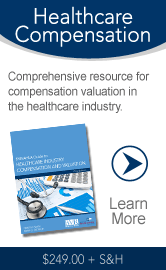 |
 |
Issue #12-1 | May 2, 2013

|
Healthier supply chain saves a bundle Smarter purchasing is one element of a national campaign launched a year ago to improve the environmental health and sustainability in the healthcare sector. It also improves the ability to cut costs. The first annual report of the Healthier Hospitals Initiative reveals how implementing sustainability initiatives has helped its 370 member hospitals reduce their environmental footprint, lower costs, and improve patient health. The report features success stories of hospitals that demonstrate the quantifiable benefits of environmentally friendly initiatives in six areas: engaged leadership, healthier food, leaner energy, less waste, safer chemicals, and smarter purchasing. Through smarter purchasing, under which hospitals buy medical supplies that use less energy, release fewer hazardous materials, and are generally better for patients and the environment, the HHI member hospitals saved $32.1 million in 2012 using single-use medical device (SUD) reprocessing and $225,485 in surgical kit reformulation. Idea in action: Almost all the facilities of the Catholic Health Initiatives (CHI) system reprocess some degree of supplies to trigger $8 million in cost savings annually. One of its facilities, the Franciscan Health System (FHS), was not having any success with its SUD reprocessing until it switched vendors to better fit its needs and system workflow. To deal with staff resistance and interference from original equipment manufacturers, buy-in from senior leadership was secured, previous wins were demonstrated, and cost benefits were highlighted. Today, according to the report, FHS reprocesses most noninvasive devices as well as some invasive devices and adds new products to the program monthly. Result: Cost savings of $2 million expected in 2013. CMS won’t delay new ACO pay model Despite a request from its Pioneer accountable care organizations, the Centers for Medicare & Medicaid Services will not delay tying payments to quality outcomes, according to a report in Law360. The Pioneer ACOs had asked for revisions to quality benchmarks they have to meet to qualify for Medicare bonuses, saying that many of the measures were not grounded in real-world data. Richard J. Gilfillan, head of the CMS Innovation Center, said the concerns have been resolved because of newly received reports from more than 200 ACOs that provide enough experience-based information to set well-supported benchmarks for various quality measures used to evaluate ACO performance. The Pioneer ACO Model is a program that is testing how different payment arrangements can help providers achieve goals of improving the quality of patient care while reducing Medicare costs. The program was designed to last for three years. For the first two years, a shared savings payment policy is being tested with higher levels of shared savings and risk for program participants than that proposed by the current Medicare program. During the third year, participating ACOs that have shown savings over the first two years will be eligible to move a substantial portion of their payments to a population-based model. No dice: Pioneer ACOs asked CMS to make 2013 another year in which ACOs are required to only report data rather than having reimbursement tied to their performance. However, CMS rejected that request, so the payments the Pioneer ACO will receive will be linked to performance this year, according to the report. Sequestration woes for small not-for-profit hospitalsNot-for-profit hospitals, especially smaller ones, face serious financial difficulties over the 2% Medicare reimbursement cuts mandated by the federal sequestration, says a report from Moody's Investors Service. Healthcare providers are expected to lose around $10 billion this year due to the cuts, and further cuts over the next 10 years will make not-for-profit hospitals' "already challenging operating environment" even worse, says the report. The 2% cuts are in addition to Medicare cuts in the Affordable Care Act, and additional cuts are forthcoming. Not-for-profit hospitals are especially at risk because they rely heavily on Medicare reimbursements. "Among all Moody's-rated not-for-profit hospitals, Medicare reimbursements accounted for a median 43.7% of gross patient revenues in 2011, a percentage that has risen steadily for several years. Barring material Medicare reform, this percentage will continue to increase as the U.S. population ages and becomes eligible for Medicare whilst increasing their utilization of healthcare services," says the report. In many cases, providers lose money on Medicare services, adding salt to the wounds. What to do: Not-for-profit hospitals should make sure they have budgeted accurately for the cuts or made spending adjustments. Larger providers with economies of scale are able to do this more easily than smaller, single-site hospitals, which will continue to be vulnerable. What is affecting the recent decline in healthcare spending? Two major forces are at work affecting healthcare spending: the economy and industry structural changes due to health reform. But which of these forces is having the biggest impact? It’s the economy: A new analysis from the Kaiser Family Foundation suggests that most (77%) of the recent decline in health spending is due to the economy, with health reform and other factors responsible for the remaining portion. “This could be due to continuing changes in the way health care is delivered, but also to rising levels of patient cost-sharing in private insurance plans that discourage use of services,” says the analysis. The economy will rebound, but reforms will continue in the long term. Also, higher copayments and deductibles will increasingly take part in holding down costs. Says the analysis: “Increases in health expenditures are likely to trend upwards over the coming decade as the economy returns to a more normal rate of growth. Sustaining low growth rates in health spending will require continued pressure for containing costs throughout the system.” Hospitals’ market clout gets one state’s attentionAt least one state may start to eyeball the increasing consolidation of hospitals and physicians. Bay state concerns: Massachusetts is being urged to monitor those partnerships, requiring hospitals to report on how they pay physicians, whether new affiliations will lead to increased payments, and how they could ultimately reduce overall healthcare costs, according to a report in the Boston Globe. Massachusetts Attorney General Martha Coakley released a report that found that the pace at which hospitals and doctors are consolidating or forming new affiliations could enable some health systems to gain significant market power, a factor that already contributes to high prices for medical care in Massachusetts. The latest findings point to the rate at which hospitals are consolidating or expanding their contracted physician networks in the name of better care coordination for patients or management of risk-based insurance contracts under which providers could lose money if patient care is too expensive. The state’s most powerful healthcare systems have more resources to attract providers from whom they may benefit financially, which will ultimately increase their overall clout. This market power could increase health costs. What to do: Any industry facing increased scrutiny or regulation needs to work with authorities to shape the rules and framework under which they operate. Failure to work in cooperation with regulators and lawmakers will subject the industry to an infrastructure of rules and regulations that may be unworkable. Pay rising for physicians on callThere’s a big swing in rates for on-call physicians, according to a new compensation survey. The MGMA Medical Directorship and On-Call Compensation Survey: 2013 Report Based on 2012 Data reports between $75 and $2,400 in median daily compensation for on-call coverage (for days on call). Physicians in surgical specialties reported $1,000 in median on-call compensation per day, whereas primary care physicians reported a rate of $150. Frequency breakdown: Of the 3,950 on-call providers representing 295 medical organizations responding to the survey, more than 35% receive on-call compensation in the form of a daily stipend. More than 12% report an annual stipend for on-call coverage, and only 7% report compensation for on-call coverage in the form of an hourly stipend. “The number of organizations paying for call in some form or another appears to be increasing as new physicians enter the workforce,” said Jeffrey B. Milburn, MBA, CMPE, MGMA Health Care Consulting Group. “Call compensation may address multiple variables, and methodologies can range from being a fairly simple hourly rate or annual stipend to a more complex arrangement addressing time and additional subsidies for uninsured patients, retention of professional fees, and restricted or unrestricted call coverage.” Link to value: The compensation structure of a healthcare organization has a definite impact on its overall value. The first comprehensive body of knowledge about the valuation of compensation in the healthcare industry is now available. The BVR/AHLA Guide to Healthcare Industry Compensation and Valuation is a must-have text for anyone who deals with compensation arrangements in healthcare and is expected to become the industry's touchstone for this emerging area.
|
|
||||||
1000 SW Broadway, Suite 1200, Portland, OR 97205
(503) 291-7963 | editor@bvhealthcarenews.com
www.BVResources.com/healthcare

